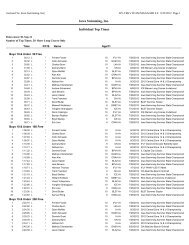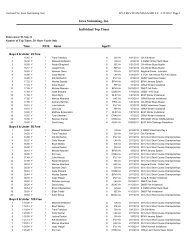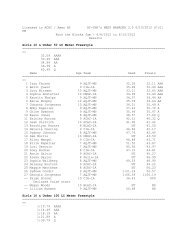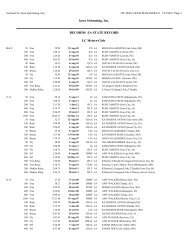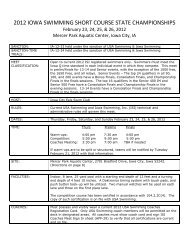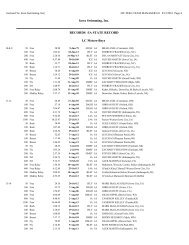2012 USA Swimming Rule Book
2012 USA Swimming Rule Book
2012 USA Swimming Rule Book
You also want an ePaper? Increase the reach of your titles
YUMPU automatically turns print PDFs into web optimized ePapers that Google loves.
406.4<br />
D<br />
Conduct of Hearing<br />
(1) Generally. Hearings shall be conducted fairly and in an orderly fashion, but without<br />
regard for the formalities of traditional courtroom procedures. The Presiding Officer<br />
is responsible for keeping the parties and their counsel, if any, focused on the issues<br />
at hand and the necessary elements of proof and for enforcing the rule that no one<br />
may speak who has not been recognized by the Presiding Officer. For hearings conducted<br />
other than entirely through the receipt of written statements, the LSC Board<br />
of Review shall cause a credible recording or transcription to be made of the hearing.<br />
No record of the deliberations of the LSC Board of Review need be kept and, if kept,<br />
shall not be available to anyone other than the members of the LSC Board of<br />
Review, the Presiding Officer and counsel to the LSC Board of Review.<br />
(2) Absence of a Party. The hearing may proceed in the absence of any party who<br />
fails to be available at the appointed time and the hearing may proceed to judgment<br />
despite that person's absence. If the Presiding Officer determines that in the interests<br />
of justice and the sport of swimming the hearing cannot proceed without the<br />
absent party, the Presiding Officer may adjourn the hearing and reschedule it for<br />
such time as the absent party can be present. Any subsequent absence may be<br />
taken into account by the LSC Board of Review in reaching its decision.<br />
(3) Sequence. The hearing shall be opened by the recording of the place, time and<br />
date of the hearing and the presence of the members of the LSC Board of<br />
Review, the parties, counsel, if any, and any other witnesses or observers. Each<br />
party (Petitioner(s) first, Respondent(s) second) may then present a brief opening<br />
statement setting forth the party's view of the issues in dispute, the relief sought<br />
and what they hope to prove by the presentation of evidence. The Petitioner's<br />
claims, evidence and witnesses shall be presented. The Respondent(s)'s<br />
defenses, claims, evidence and witnesses shall then be presented. In the discretion<br />
of the Presiding Officer, the Petitioner(s) may then be allowed to rebut any<br />
testimony or evidence presented by the Respondent(s) after the Respondent(s)'s<br />
initial presentation. In the discretion of the Presiding Officer, the Respondent(s)<br />
may be permitted to rebut any testimony or evidence presented by the<br />
Petitioner(s) during the Petitioner's rebuttal presentation. Finally, each party (in<br />
the same order) shall be entitled to make a brief summation of that party's case.<br />
(4) <strong>Rule</strong>s of Evidence; Witnesses' Testimony. The rules of evidence governing the<br />
hearing are set forth in 406.2.6 above. Each witness may present testimony initially<br />
either in the form of questions and answers between the witness and counsel<br />
or in uninterrupted narrative. The Presiding Officer and the members of the<br />
LSC Board of Review may question any person at any time during the hearing.<br />
Thus, for example, in an exercise of discretion, the Presiding Officer could call a<br />
witness who has not yet been called or whom no party intended to call and propound<br />
questions to, or elicit narrative testimony from, that witness. Witnesses<br />
shall be subject to cross examination by the other party and to questioning by the<br />
Presiding Officer and members of the LSC Board of Review. All parties will be<br />
expected to be available for questioning by the LSC Board of Review, whether or<br />
not they may have given other testimony at the hearing.<br />
(5) Oath. All witnesses shall be sworn using an oath substantially as follows: “I<br />
2<br />
4<br />
<strong>2012</strong> <strong>Rule</strong>s & Regulations 103




